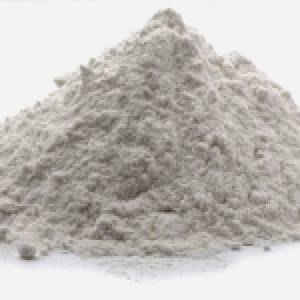Description
Titanium Dioxide: The Versatile White Pigment
Titanium dioxide (TiO2) is a naturally occurring oxide of titanium, prized for its exceptional brightness, high refractive index, and excellent opacity. It's widely used as a pigment in a vast array of applications, from paints and coatings to plastics and cosmetics, due to its unique properties and versatility.
Key Features and Benefits:
- Exceptional Brightness and Whiteness: TiO2 boasts the highest refractive index of all commercially available white pigments, resulting in unparalleled brightness and whiteness. This makes it ideal for applications where maximum light reflection is crucial.
- High Opacity: Its excellent opacity means that it effectively masks underlying colors, providing superior coverage even at low concentrations. This reduces the need for large quantities of pigment, leading to cost savings.
- UV Resistance: TiO2 offers significant protection against ultraviolet (UV) radiation. This makes it a valuable additive in products exposed to sunlight, extending their lifespan and preventing degradation. This property is especially important in sunscreen and outdoor paints.
- Chemical Inertness: TiO2 is chemically stable and inert, meaning it resists reactions with other substances. This ensures its long-term durability and prevents discoloration or degradation in various environments.
- Non-Toxic (when used appropriately): While generally considered safe for use in many applications, the safety profile of TiO2 is subject to ongoing research and regulations. Different forms and particle sizes may have different toxicity profiles. Always adhere to relevant safety guidelines and regulations for handling and usage. Note that some concerns exist regarding nano-sized TiO2 particles.
Available Forms:
TiO2 is available in two main crystalline forms:
- Rutile: Characterized by higher refractive index, opacity, and tinting strength compared to anatase. It's more commonly used in paints, plastics, and coatings.
- Anatase: Possesses slightly lower opacity and refractive index than rutile. It's often preferred in applications requiring specific photocatalytic properties.
Applications:
The versatility of TiO2 allows for its use in a wide range of industries and products:
- Paints and Coatings: Provides excellent whiteness, opacity, and UV protection in architectural, automotive, and industrial coatings.
- Plastics: Enhances the brightness and opacity of plastics, improving their aesthetic appeal and UV resistance.
- Cosmetics and Personal Care: Used as a pigment in sunscreens, makeup, and other personal care products due to its UV-blocking properties.
- Paper: Increases the brightness and opacity of paper, enhancing its print quality.
- Food: Used as a food additive (E171) to whiten and brighten food products. Note: Regulatory status of TiO2 as a food additive varies across different countries.
- Printing Inks: Improves the brightness and opacity of printing inks.
- Fibers: Used to enhance the brightness and whiteness of synthetic fibers.
Safety Precautions:
While generally considered safe in many applications, proper handling and safety precautions are crucial. Always refer to the Safety Data Sheet (SDS) for specific information on handling, storage, and disposal. Inhalation of TiO2 dust should be avoided. Proper ventilation and respiratory protection should be used when handling TiO2 powder.
Conclusion:
Titanium dioxide is a crucial ingredient in a vast array of products, providing exceptional whiteness, opacity, and UV protection. Its versatility, performance, and cost-effectiveness make it a vital component across numerous industries. However, it's crucial to always refer to the relevant safety data sheet and adhere to applicable regulations when working with TiO2.
